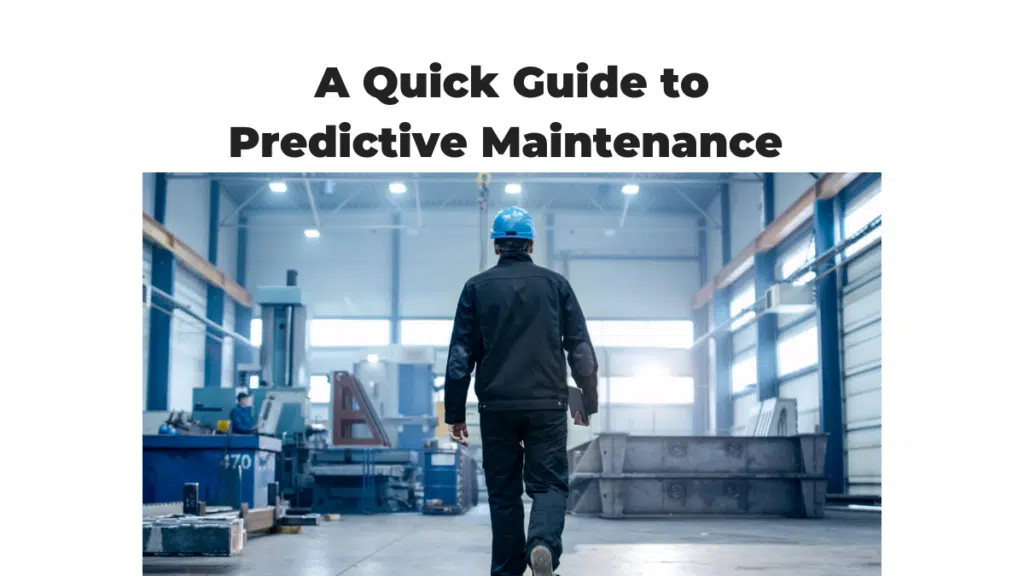A Quick Guide to Predictive Maintenance

The fourth industrial revolution is bringing change to manufacturers as decades-old processes need to be reworked to meet the changing environment and to maintain relevance in the modern marketplace. Rethinking business processes can bring about change that leads to a win for manufacturing companies. There is one hard and fast rule in manufacturing. Machines break down. Traditionally machine breakdowns are avoided with a combination of experience and instinct, but now a new solution has risen from amongst the buzzwords that surround this revolution. Predictive Maintenance.
What is predictive maintenance?
Predictive maintenance is a method for anticipating the maintenance requirements of machines on your factory floor. Using historical data, it can predict which machines are likely to fail, which machines need service, and most importantly, figuring out the root of the problem. This leads to data collections that enable a manufacturer to improve production capabilities as their resources can $50 billion more wisely.
What are the benefits?
Four main benefits will stem from integrating predictive maintenance into your operation. The first is equipment lifespan. With data points revealing equipment needs you will be able to get more from your machines. Once data is collected long enough, you will soon be able to plan for upcoming parts cost and allocate labor and money appropriately. The second will be the downtime. Machine downtime, whether it is planned or unplanned, will both become more efficient. Unplanned downtime cost manufacturers up to $50 billion per year according to the Wall Street Journal. The third benefit is increased production. This will obviously impact revenues as each machine’s output is increased resulting in a healthier bottom line. The fourth benefit to consider is the productivity increases in your workforce. When a machine has an unplanned breakdown, the resulting rush hinders your employees’ time and production schedules. It is far less costly and time-efficient to perform smaller routine maintenance tasks.
What Predictive maintenance looks like on the manufacturing floor
Next we will look at a high-level view you can use when choosing to implement predictive maintenance into your manufacturing process. The process starts on the production line with your equipment assets which is combined with the data collecting hardware. This is where the data is collected and this then leads into the data storage portion of the system. Data storage is the point where the data is put through the AI algorithms to provide the analytical and predictive data which is then put into dashboards and alerts. While this doesn’t provide an in-depth description of each process we hope it gives you value when researching and implementing predictive maintenance into your day to day operations.
We see a lot of exciting changes ahead for the manufacturers we deal with every day. The modern manufacturer is far ahead of the generations past, and the fourth industrial revolution will bring manufacturers into a new age of productivity and growth. With 42 years of witnessing the change in the manufacturing industry, we cant wait to see what is next.
Thanks for reading,
Bee Clean Team